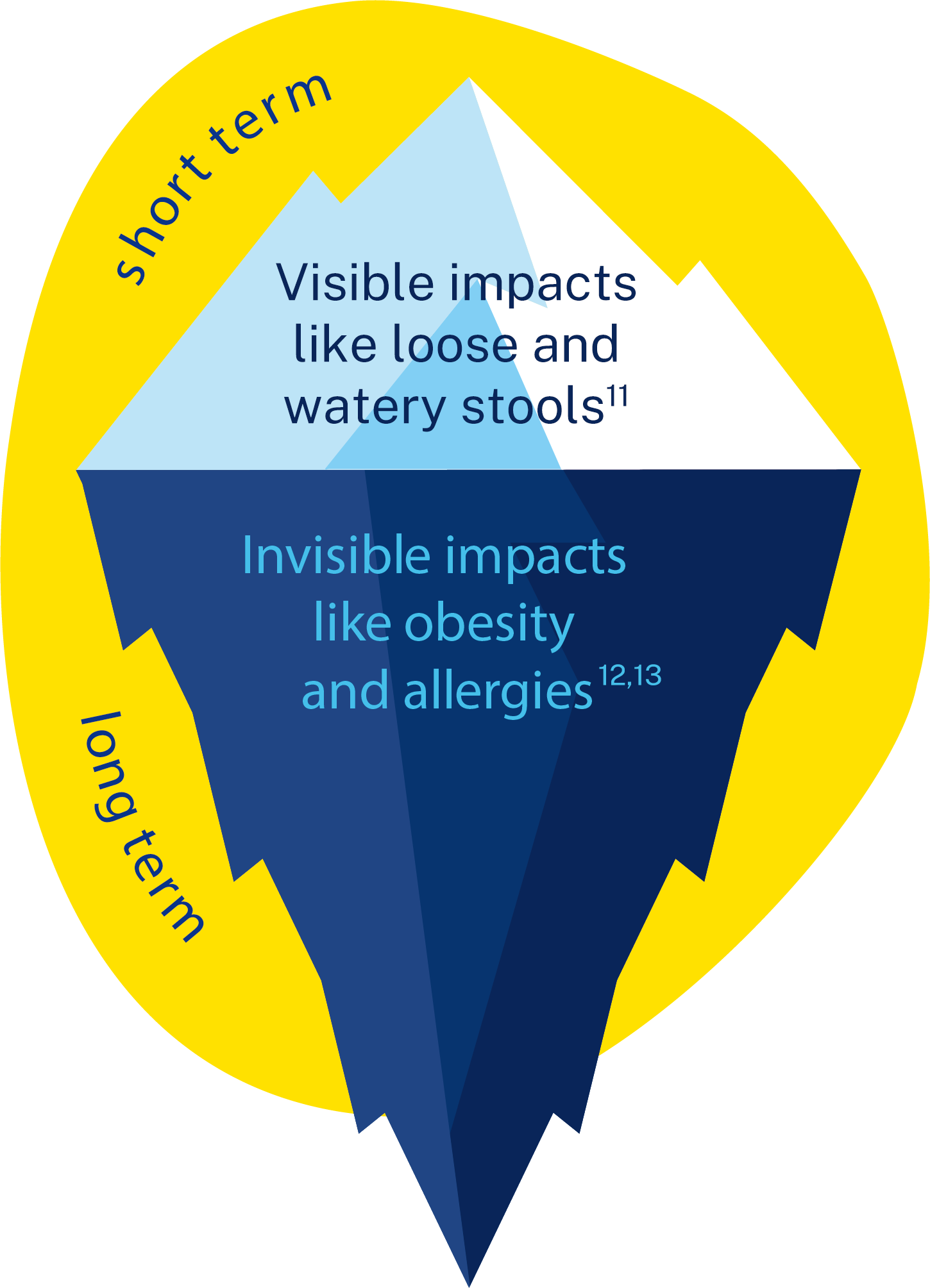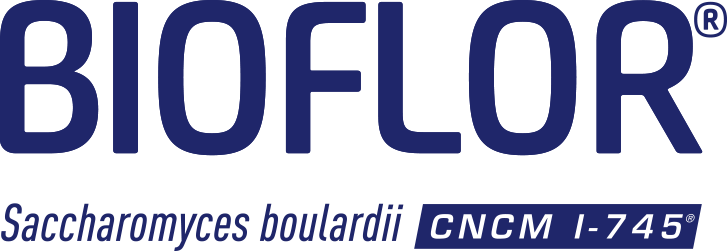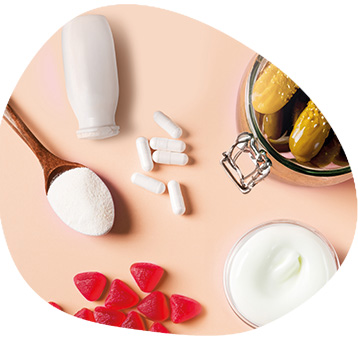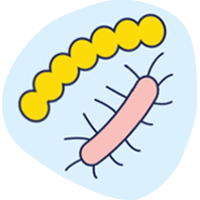INSIDE YOUR BODY
Get to Know Your Gut Microbiota
The gut microbiota is a vast community of bacteria, fungi, and other microorganisms that live within your gut7, playing a vital role in maintaining your health. Think of them as trillions of tiny helpers working tirelessly behind the scenes to ensure your body functions smoothly and stays in good health.
However, the balance can easily be disrupted by many factors like8,9:
However, the balance can easily be disrupted by many factors like8,9:
- Viruses
- Antibiotics Intake
- Chronic Diseases
- Stress
- Brutal Change of Diet
When your gut microbiota becomes imbalanced or unhealthy, it can have a significant impact on your overall well-being10, leading to various health conditions.










